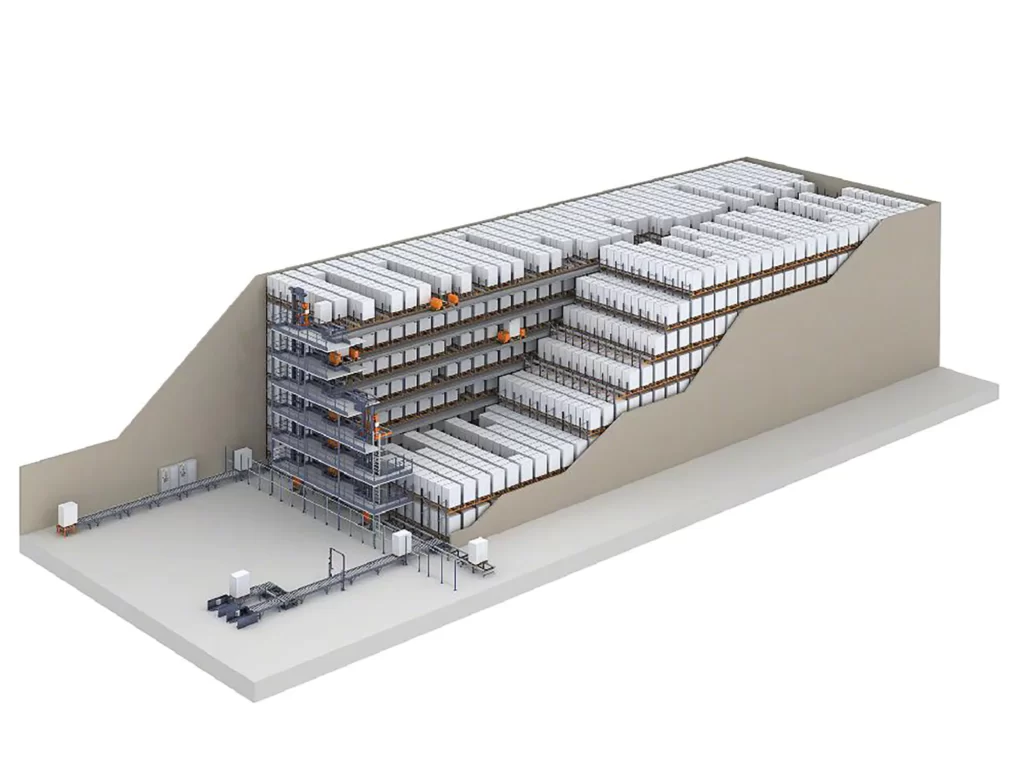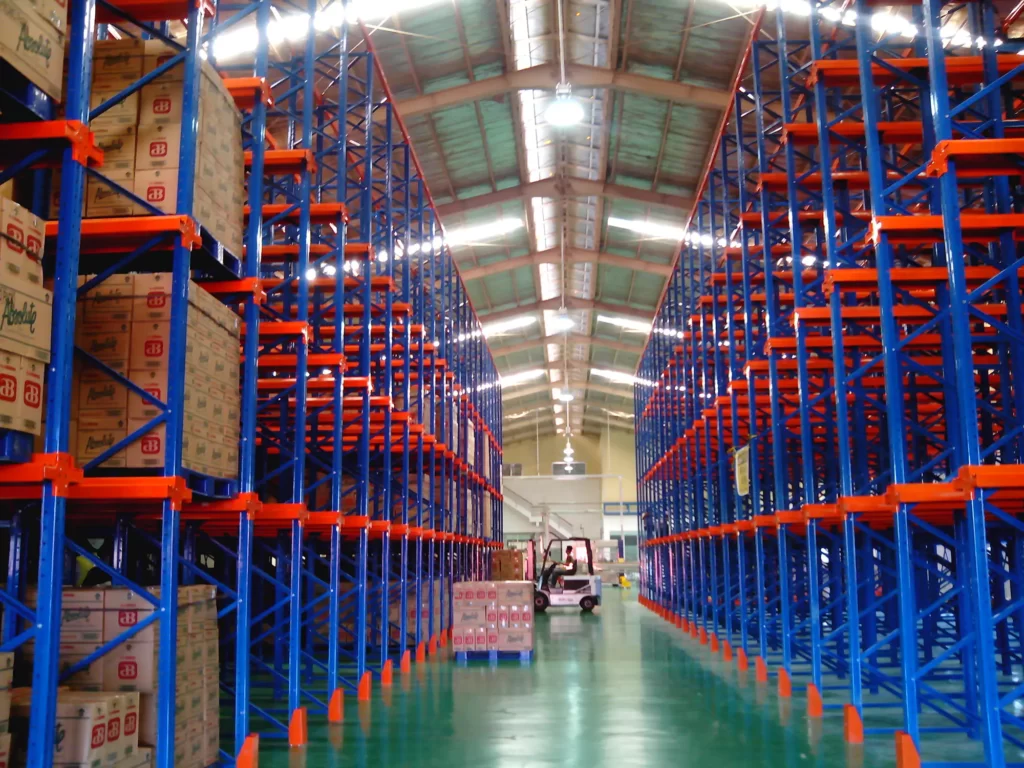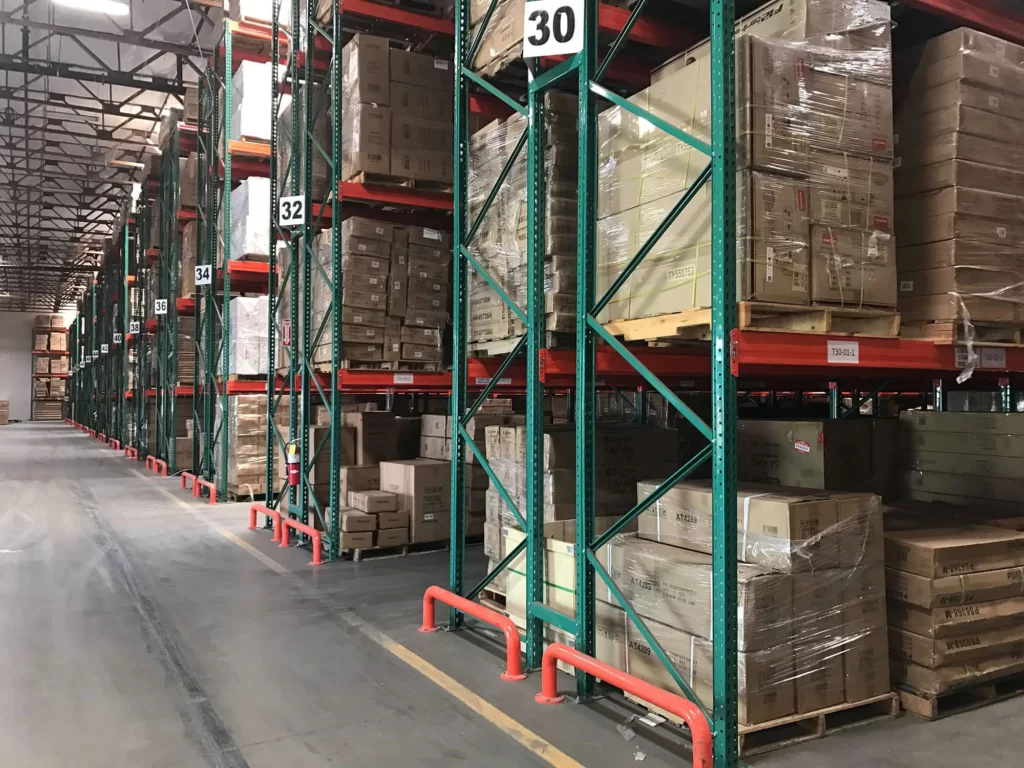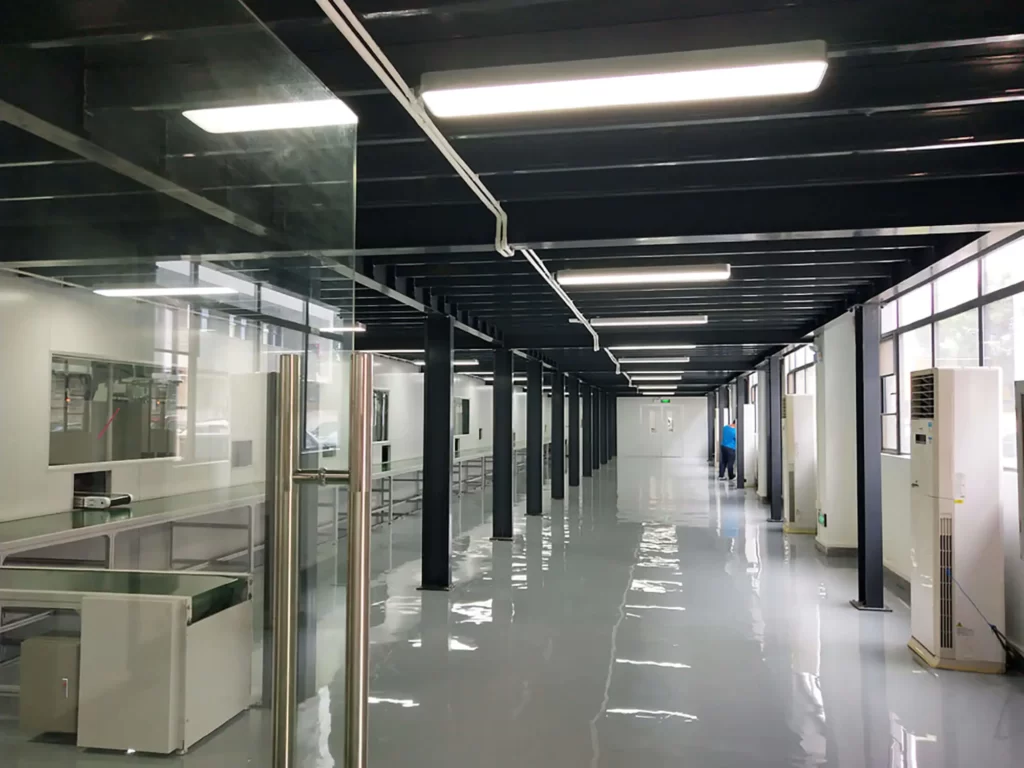As technology advances, more and more types of automated storage and retrieval systems, which were once thought to be out of reach for many small companies, have emerged. These AS/RS solutions provide a broad range of sizes, speed, flexibility, and affordability, making them one of the most effective investments for most businesses.
These advanced technologies are facilitating the transition from picking pallets to assessing individual products, bringing numerous benefits to organizations that implement them.
If you are still unsure about what AS/RS is and what role it plays in improving your operation’s efficiency and profitability, then this article is for you. Additionally, this guide helps you explore the top 8 types of automated storage and retrieval systems, as well as some cost factors and key pointers on how to select one for your business.
Defining An Automated Storage And Retrieval System (AS/RS)
Automated storage and retrieval systems, sometimes known as AS/RS, are software-controlled systems that automatically place and retrieve inventory within your facility with precision, accuracy, and speed. Thus, these technologies help increase your throughput and minimize waste.
Although AS/RS is the most popular name, these automation technologies are also known by many other monikers, including high-density storage and retrieval systems, goods-to-person picking solutions, and dynamic storage systems.
Once you step into this logistical tech world, you’ll be surprised at how diverse it is. There are many types of automated storage and retrieval systems that you should familiarize yourself with before diving deeper. Some of them include carousel modules, vertical lift modules, vertical buffer modules, and autonomous mobile robots.
The best thing about AS/RS technologies is that you can combine them in a multitude of ways to create solutions that match your operation’s specifics. It’s also possible to incorporate them with other software, such as Sistema de execução de armazém or Sistema de Gerenciamento de Armazém para máxima eficiência.

Why Are AS/RS Technologies Important?
Through the automation of mundane and repetitive processes of goods storage and retrieval, AS/RS offers a wide array of significant advantages. The following benefits are the reason for its increasing importance in today’s logistics:
- Maximizing vertical space: This is by far the most evident advantage of AS/RS. These technologies utilize your warehouse’s whole ceiling height to provide high-density storage in a small footprint.
- Boosting throughput: As AS/RS solutions utilize pick-to-light technologies that guide operators to the precise pick positions, they can effortlessly boost throughput. The boost is even greater if you apply batch picking, which bundles orders with similar items to help complete more orders simultaneously.
- Enhancing stock-keeping capacity: By using tightly arranged bins, drawers, totes, and dividers, AS/RS ensures all products remain firmly compressed and thus optimizes inventory capacity.
- Augmenting order picking precision: With pick-light systems and integrated message functions to relay pick information to the operator, AS/RS technologies ensure top-notch pick precision in terms of the desired product, its location, and the needed quantity. In other words, these aids help eliminate picking mistakes.
- Improving warehouse safety and ergonomics: AS/RS technologies are capable of bringing items to operators at the ideal ergonomic height, often known as the “Golden Zone”, or the distance between a user’s shoulder and knee. Thus, there’s no need to bend down to low-level items or extend out to grasp high-level items. This significantly reduces injury and fatigue risks for warehouse staff.
- Lowering labor burdens: Following the goods-to-person principle, AS/RS solutions are specifically designed to deliver the desired product directly to the operators, which significantly saves their search time. All they need to do is stay in the allotted work area while machines bring stored items to them.
- Revamping product control: Last but not least, AS/RS solutions store products in a completely enclosed system, thus revamping inventory control. Not only can this technology ensure items are free of dirt and environmental toxins, but it can also provide access of stored inventory to only authorized staff using passwords, thus increasing warehouse security.
How Can AS/RS Enhance Your Warehouse Operations?
Now that you know what an AS/RS is and its significant benefits, let’s discover how businesses are applying this advanced technology in their warehouses. Below are four typical applications of AS/RS:
Preparing Orders For Delivery
In today’s world, consumers possess the ability to purchase and place orders at any moment. Following that, they expect prompt and reliable product delivery. However, even if a business processes all orders around the clock, shipping windows face various constraints, such as cut-off times, working shifts, and expedited shipping fees.
In order to compensate for these limitations, you can continuously pick and process orders and then utilize an AS/RS to stage them in buffer storage until the shipment window reopens.
This practice optimizes production capacity, guarantees enhanced precision, and enables uninterrupted output, even in situations where orders are physically unable to depart the inventory facility.
Point-Of-Use Storage
Not only maximizing the utilization of available storage space, but an automated storage and retrieval system is also capable of automating long-term inventory plans and retrieving only the items required at the appropriate time, thereby optimizing warehouse space utilization and labor costs.
As mentioned above, AS/RS is often integrated with other software, especially Warehouse Execution System. This setup enables businesses to meet various industry-specific criteria and adapt to various inventory management systems, including LIFO and FIFO, expiration dates, and cut-off times.
Enabling Buffer Inventory
Each process in a conventional warehouse requires a different amount of time to be carried out. Without effective management in place, small events like a slight delay at any stage are sufficient to halt or cause a significant deceleration to the entire operation.
The objective of buffering is to avert such a failure by guaranteeing that an adequate quantity of inventory or products is consistently available at various phases to sustain the operation. However, despite the logical nature of buffering, improper management can lead to a logistical catastrophe.
That’s when AS/RS come to the rescue. This technology helps substitute for or alleviate the need for these buffering systems, enabling an operation to store buffer products and reclaim them with optimal efficiency. You can implement AS/RS at various stages of the workflow, contingent upon the operation’s specifics. For instance:
- Inbound receiving buffer: involves staging products upon delivery.
- Point-of-use buffering: involves storing products precisely where they are along the production line.
- Consolidação de pedidos: involves holding various parts of an order in different zones before consolidating them for the final delivery.
Goods-To-Person Order Picking
Processing, packaging, and picking are among the most time-consuming operations involved in order fulfillment. Indeed, strolling and manually selecting orders can consume a lot of the operator’s picking time. Those days are over with AS/RS, as it provides an alternative solution via the goods-to-person order picking concept.
Simply speaking, this new solution releases the operators from physical movement between product locations in order to retrieve an order. Rather, automation systems like transporte de paletes, carousels, and RAM (Autonomous Mobile Robots) can retrieve the required inventory and transport it directly to the staff stationed at the picking zone.
After the staff has selected the required quantity of a certain product, the remaining items are returned to storage, and the next product type for the order will be presented to the warehouse worker for picking.
Furthermore, AS/RS technologies can arrange products in a sequence that optimizes logistical efficiency in any given situation. This includes putting heavy items at the bottom or ensuring that similar products are grouped together to correspond with the shipping zone and cut-off times, among other possibilities.

Exploring 8 Types Of Automated Storage And Retrieval Systems
Knowing the following 8 types of automated storage and retrieval systems is the first step in selecting the ideal one for your business, thus enabling better warehouse efficiency. Let’s find out below what these AS/RS types are.
#1: Mini-Load AS/RS
For businesses that need storage sites for a high number of products but do not have enough floor space to implement the typical carton-flow shelving to offer a pick face for each item, mini-load AS/RS is the go-to solution in these scenarios.
Rather than full pallets, mini-load AS/RS is designed to automatically carry totes, cartons, and trays to and from the facility. That’s why this system is also known as a “tote-stacking” or “case-handling” solution.
It typically includes stacker cranes and a rack structure, together with a pickup station and system-controlled software. When picking or retrieving items, the crane traverses an aisle between racks while a loading gadget ascends and descends the crane’s height to attain the appropriate shelf height.
Upon reaching the designated storage position, this loading gadget will deposit or retrieve the cargo. After that, the crane gets back to the aisle’s end to deposit the cargo for subsequent steps.
This inventory solution is more suitable for handling lighter loads (maximum 35 kg). Besides automatically refilling pick sites, this AS/RS type is also utilized to buffer and release, or organize items to picking and packing areas.
#2: Unit-Load AS/RS
Unlike mini-load AS/RS, this next AS/RS type is ideal for holding larger storage systems like pallets. It comprises narrow-aisle racking systems that can extend up to 30 meters in height and store numerous pallets inside. A hoist is utilized in conjunction with these racks to physically position and retrieve pallets as required.
Typically, unit-load AS/RS are employed to manage voluminous and weighty cargoes in the vicinity of 450 kg to nearly 2,500 kg. This capability enables unit-load AS/RS to manage cases and pallets in their entirety or in part.
When retrieval is of utmost importance and pallet-level storage is limited, unit-load AS/RS is an especially useful solution. Oftentimes, this AS/RS type is available in two sub-categories:
- Fixed-aisle unit-load AS/RS: This solution comprises a crane traversing those narrow aisles in order to retrieve and stock goods by executing both horizontal and vertical motions. This crane is secured or fixed to a single aisle.
- Movable-aisle unit-load AS/RS: Like fixed-aisle unit-load AS/RS, this second solution also includes a crane running along a track between narrow aisles of pallets. However, this crane is not secured to a particular aisle but effectively attends to many aisles, thereby creating a more spacious work environment.
#3: Micro-Load AS/RS
If you desire a system that facilitates the storage and retrieval of discrete cartons or totes, let’s give micro-load AS/RS a chance! This technology is useful not only for buffering but also for sequencing items in compact warehouses.
Semelhante a VLM, this AS/RS type also includes an inserter or extractor tool that passes through the core of the system, picking up a certain queue of goods and discharging them onto an awaiting conveyor or workstation.
There are numerous models of micro-load AS/RS, each of which stores and retrieves items in different ways. While all designs are capable of taking one object in a single pass, some advanced models can support up to five products.
What sets this AS/RS type apart is that it can be utilized to hold goods until they are required by sending them to waiting conveyors. It’s also possible to combine this system with other AS/RS types to increase their performance while significantly reducing requirements for conveyors and floor area.
#4: Shuttle-Based AS/RS
As the name suggests, shuttle-based AS/RS transports inventory using a shuttle that moves along a track between racking structures. The shuttle, often powered by capacitors or batteries, can function on one or several layers, depending on the operation’s requirements.
Here’s a detailed workflow of these shuttles. When an item is requested, these bots go to the product’s location and collect the bag or carton containing the desired product. Then, it will transport the tote or carton to a conveyor, which moves everything towards a workstation, or deliver it to a workstation directly.
Each shuttle type has its unique design that offers distinct advantages. For instance, to maximize the warehouse’s floor space, one can vertically orient the shuttle. This way, the shuttle can move along the rack’s perimeter before entering an aisle to retrieve the required tote and transport it to an integrated station.
There is another shuttle model that also utilizes a vertical rack, but the bot operates on the floor before climbing up to retrieve its tote. The inventory is then sent separately to a distant workstation. It will wait there until it is picked, at which point it will be automatically assigned a new job and the process will be repeated.

#5: Autonomous Mobile Robot (AMR) AS/RS
The next AS/RS type is often abbreviated as AMR, which fully means Autonomous Mobile Robot. This technology refers to a high-density AS/RS that utilizes three-axis AMRs to go vertically up a storage rack to collect the necessary case or tote.
After that, the AMRs store the goods on their own, move down the rack onto the floor, and reach for the pickup workstations. These robots ascend the workstation’s ramp and rely on the integrated pick-to-light system to know the product and its quantity to retrieve.
The warehouse staff then puts the necessary goods and quantity into the batch orders before the AMRs depart for their next assignments.
This system offers significant versatility in terms of storage density, throughput, and manpower needs. You can add, remove, or relocate additional racks and AMRs to accommodate current and expected activity levels.
#6: Vertical Lift Module (VLM) AS/RS
The following AS/RS type is an enclosed solution made up of an inserter or extractor in the center, with multiple columns of trays on each side. When this goods-to-person technology operates, the inserter or extractor will find the appropriate tray for the requested item, collect it, and bring it to the warehouse staff.
After the order is completed, the Vertical Lift Module, or VLM, will send the tray back to its rightful place before fetching the next tray. Speaking of trays, you will have a fixed-tray system, where all trays are always returned to the same spot, and a dynamic-tray system, where the trays’ locations are kept different.
#7: Carousel-Based AS/RS
This type of automated storage and retrieval system comprises inventory bins that run continuously along a track. Upon receiving a specific item request from the warehouse operator, carousel-based AS/RS will rotate in an automated fashion to ensure that the corresponding receptacle is accessible to be picked.
This AS/RS type allows up to three tiers of carousels to be placed on top of one another, with cases and totes being carried onto each storage level. All these carousels operate autonomously in order to deliver the required items to an inserter or extractor tool that traverses the warehouse floor in front of them.
This tool can handle up to two cases or totes each trip to the take-away conveyor. Then, the goods are transported to a workstation. Additionally, it can retrieve returned items and bring them back to the waiting shelf.
Based on the rotation direction, carousel-based AS/RS is divided into the following two subtypes:
- Vertical carousels: With this subtype, the inventory bins rotate in a vertical direction, resembling a ferris wheel. This system can store huge amounts of items in a compact warehouse and enhance ergonomics by offering products to operators at a suitable height.
- Horizontal carousels: Unlike vertical carousels, the inventory bins in horizontal carousels move in a horizontal motion, similar to the merry-go-round movement. This subtype is frequently used to support small products, such as raw materials and documents.
#8: Vertical Sequence Modules (VSM) AS/RS
This AS/RS type has a picker in the middle of the stack of racks that goes back and forth to choose requested products and transport them to an awaiting conveyor or workstation.
Vertical Sequence Modules AS/RS are very similar to Micro-Load AS/RS. It is often enclosed, with the arm free to move inside the racking area. It also returns the storage unit to its proper place once the order has been performed before moving on to the next operation.

Consider These AS/RS Cost Factors Before Purchase
As with practically any warehouse automation technology, the ultimate cost of an AS/RS varies greatly from operation to operation and even industry to industry. The easiest approach to determining which system is suitable for you and how much it will cost is to get advice from a qualified and reputable manufacturer.
Thus, recognizing the many aspects that often determine the ultimate expense of investment allows you to predict where your new system will lie on the cost spectrum. Below are the most essential cost factors you must consider when planning to establish an AS/RS:
- Type of inventory facility (traditional warehouse, cold storage warehouse, etc.)
- Warehouse size.
- Product weight and characteristics.
- Warehouse’s available clear height.
- Inbound and outbound mechanisms to carry items within the facility.
- Current labor expenses and the amount of labor needed when adopting an AS/RS.
Key Pointers In Choosing Your Ideal AS/RS Type
Despite the many wonderful benefits an AS/RS can offer to your warehouse, it is not a universal solution for businesses. To determine if AS/RS technology is a good fit or not, you should look at your operations’ specifics, such as business cycle, growth rates, and your available budget.
This part contains a list of Yes/No questions that gauge the compatibility of an AS/RS with your warehouse. The more “Yes” you have, the better it is to implement AS/RS technologies in your business.
- Are you experiencing a rise in labor expenses?
- Is it difficult to retain competent employees or fill open roles?
- Are you facing any problems with worker ergonomics?
- Does your inventory facility have enough room for all operations?
- Do you require more throughput from the operations?
- Do you require more storage capacity and more precise product tracking?
Quick Recap On 8 Types Of Automated Storage And Retrieval Systems
This part is all about summarizing what you have learnt about the 8 types of automated storage and retrieval systems above, but in a more compact and friendly way with the table format. Feel free to refer to it whenever you want a quick review about this topic.
| Type of AS/RS | Breve Descrição |
|---|---|
| #1: Mini-Load AS/RS | Utilizing stacker cranes to store and retrieve small loads or totes from high-rise racks. |
| #2: Unit-Load AS/RS | Handling full pallet or large case storage and retrieval using automated cranes (fixed-aisle or movable-aisle) traveling along aisles of high-rise racks. |
| #3: Micro-Load AS/RS | Storing and retrieving very small inventory items like packaged electronic components using specialized machines (inserter/extractor robots). |
| #4: Shuttle-Based AS/RS | Using autonomous vehicle shuttles that travel horizontally along rails to store and retrieve loads from racks. |
| #5: Autonomous Mobile Robot (AMR) AS/RS | Utilizing fleets of self-guided robots to store and retrieve loads from high-density racks or staging areas. |
| #6: Vertical Lift Modules (VLM) AS/RS | Employing an enclosed vertical lift to automatically store and retrieve trays or totes from closely-spaced levels. |
| #7: Carousel-Based AS/RS | Rotating inventory bins in a compact layout automatically, delivering required items to an operator pick window. |
| #8: Vertical Sequence Modules (VSM) AS/RS | Using vertical stacked trays circulating on a continuous loop to store and deliver items to ergonomic pick stations. |
Conclusão
In conclusion, it’s safe to say that AS/RS technologies provide a wide array of advantages to all businesses. They do it by automating many warehouse tasks, such as buffering, stocking, and retrieving on-demand products.
This informative post has equipped you with all there is to know about this automation technology and helps you explore various types of automated storage and retrieval systems. You also gain more insights regarding AS/RS costs and important pointers on how to select the best type for your organization.
Hopefully, after reading, you have become more confident on this topic. Choosing an AS/RS type is easier than ever before. Thanks for reading!








